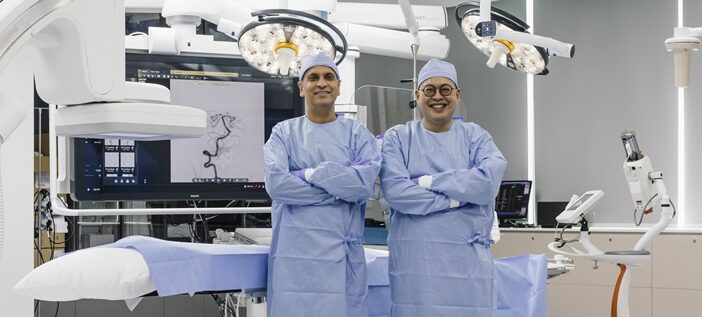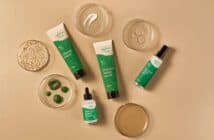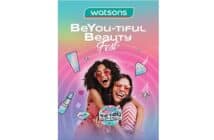Before we discuss what Varicose Veins are, let us review how healthy veins function. Veins are a type of blood vessel that return deoxygenated blood back to the heart. In order to prevent backflow of blood, veins have valves to keep blood moving toward the heart.
Think of valves as a door that only opens in one direction. So when blood is being pumped upward against gravity, it doesn’t flow backward and pool at your feet.
What are Varicose Veins?
When veins function properly, they are barely visible. However, when the valves in a vein don’t work properly, blood does not flow effectively. This can result in veins becoming enlarged, swollen and appearing blue or dark purple.
These are Varicose Veins.
They are more common amongst women (67%) than men (41%). They also tend to happen in the legs and lower limbs because they are furthest from the heart.
Vein Varicosity lies on a spectrum, for which there are 6 stages. The progression from one stage to the next signals an increase in severity as more symptoms present or worsen.
Stage 1: Spider Veins. These are small, reddish-purple veins that are visible on the legs, ankles, neck, face and are more common in women than in men. These are not necessarily related to Varicose Veins but are caused by the same underlying issue with the vein.
Stage 2: Enlarged, Ropy Varicose Veins. Much like Stage 1, this is when people often become aware that there is venous malfunction. Symptoms accompanying this are itching, burning, or numbness along the veins themselves, and by tired, weak, or achy legs.
Stage 3: Edema or Swelling but without skin discolouration. Issues with the vein have impaired the circulatory systems’ ability to reabsorb fluid build up in the limb. .
Stages 4 to 6: can present with Skin Discolouration and Ulceration. The progression of the disease results in venous congestion and poor circulation. This is the cause of the discolouration and possible changes in skin color and texture. Ulceration can be healed with treatment in stage 5. However, Stage 6 presents with Active Ulceration which can be resistant to treatment. This results in your legs to be consistently covered in bleeding, open sores.
vascular interventional treatments in singapore
vascular interventional treatments in singapore
best treatment for peripheral artery disease singapore
dr benjamin chua
Does Everyone Get Varicose Veins?
These risk factors increase your risk of developing Varicose Veins:
Age: Aging causes wear and tear on the valves in your veins. This eventuates in the backflow of blood in your veins as the valves are not as capable of keeping blood flowing in toward your heart.
Jobs Where You’re on your Feet: Your blood doesn’t flow as well if you’re stood up for long periods of time.
Family History: If other family members had varicose veins, there’s a greater chance you will too.
Obesity: Obesity puts extra pressure on the veins and valves in your legs. Over time, the added stress can cause these valves to fail.
Gender: Unfortunately, women are at a higher risk of developing Varicose Veins. This is due to hormonal changes before the period or during pregnancy. During pregnancy, women have more blood in their circulatory system. This change supports the growing foetus, but also enlarges veins in your legs. Menopause can also be a factor because female hormones can cause dilation in the vein walls. Hormone treatments, such as birth control pills, might increase your risk of varicose veins.
clacs singapore
dr ben chua
dr benjamin chua
dr benjamin chua novena
What are The Symptoms?
In most cases, patients with Varicose Veins will exhibit veins that swell, bulge and are blue or dark purple in colour. In more severe cases, patients can experience severe discomfort.
The developmental stages of Varicose Veins are as follows:
- The development of spider veins, otherwise known as telangiectasia varicose veins. These are known to cause aches, pain and restlessness.
- Veins slowly become enlarged and blood seeps out of the veins into surrounding tissue.
- Hemoglobin is deposited in the skin and causes pigmentation in the skin likened to rust and can be itchy.
- This results in Venous Eczema or gravitational dermatitis.
- If left untreated, the skin can break down spontaneously which results in Venous Ulcers.
- Venous Ulcers can further complicate with symptoms such as a fever and purulent discharge forming at the wound.
health screening to prevent stroke singapore
health screening to prevent stroke singapore
pelvic congestion syndrome specialist near me
the vascular & interventional group
vascular and interventional centre
What are the Treatment Options Currently Available?
There are both non-surgical and surgical treatments for Varicose Veins. While some halt the further development of Varicose Veins, some are curative. The following procedures can be performed at The Vascular & Interventional Centre (VIC) and are applied based on what is best for the patient.
Exercise and wearing compression garments are alternatives to surgical intervention. They focus on increasing or decreasing blood pressure to prevent blood from further pooling at the lower extremities. It is worth noting that those treatment options are not curative and will require lifelong use of compression stockings.
One example of invasive surgical intervention is Radiofrequency Ablation. This procedure is a minimally invasive day procedure that is done under sedation. It begins with an access puncture in the affected vein big enough to insert a probe with a heated tip. The heated tip then cauterizes the vein to permanently close it and prevent backflow.
Another Ablation procedure performed at VIC is Clarivein™ Mechanochemical Ablation. This combines the application of a sclerosant and the mechanical destruction of the vein. A thin, rotating catheter is inserted through an access puncture that damages the innermost layer of the vein. Simultaneously, the sclerosant seals off the vein.
Sealants in the form of Venseal™ or VenaBlock can also be applied. They are specially formulated medical adhesives that are used to seal the Varicose Vein permanently. Treatment is typically completed in 15-20 minutes. This procedure aims to provide relief by rerouting blood to healthy veins.
Treating Varicose Veins with CLaCS
There is a solution to prevent complications for Varicose Veins called Cryo Laser and Cryo Sclerotherapy (CLaCS). This procedure was created in 2002 by Dr. Roberto Kasuo Miyake. This was to cater to patients’ requests for treatment that did not require hospitalization.
At VIC, CLaCS is used to treat stages 1 and 2 of Varicose Veins. It is a minimally invasive procedure that only takes 45 minutes. It combines a transdermal laser effect and injection sclerotherapy all while the skin is under cooling.
Simply put, this laser acts on the vein wall and causes photothermolysis. This reduces the veins’ size without damaging the skin. Then, a sclerosant is injected into the vein which causes it to shrink. All this is done with a cooling unit blowing cold air at -20°C to reduce discomfort.
The end result is visual dissipation of the Varicose Veins in 4-6 weeks with little pigmentation, scarring and pain.
VICs’ decision to use CLaCS was based on effectiveness and efficacy. One consideration was a review done in 2018 on complications of 577 procedures using CLaCS. The review found minimal complications; skin pigmentation in 1.35% of the cases, skin burn in 0.19% and matting in 0.06%. The cases reviewed were between August 2011 and November 2016.
About VIC
The team of clinical specialists at VIC comprises of Dr. Benjamin Chua, Vascular Surgeon and Dr. Manish Taneja, Interventional Radiologist. Together as a team, they provide comprehensive vascular and interventional service for patients.
What can you do about Varicose Veins?
If you’d like to get in touch for a consultation, do not hesitate to get in touch using the contact form or contact details below.
VIC Contact form:
https://www.sgvascularctr.com/varicose-veins/
VIC Contact details:
TEL:+65 98983595
EMAIL: [email protected]
dr manish taneja
dr manish taneja
vascular intervention
vascular intervention
vascular & interventional centre
vascular interventional physicians




